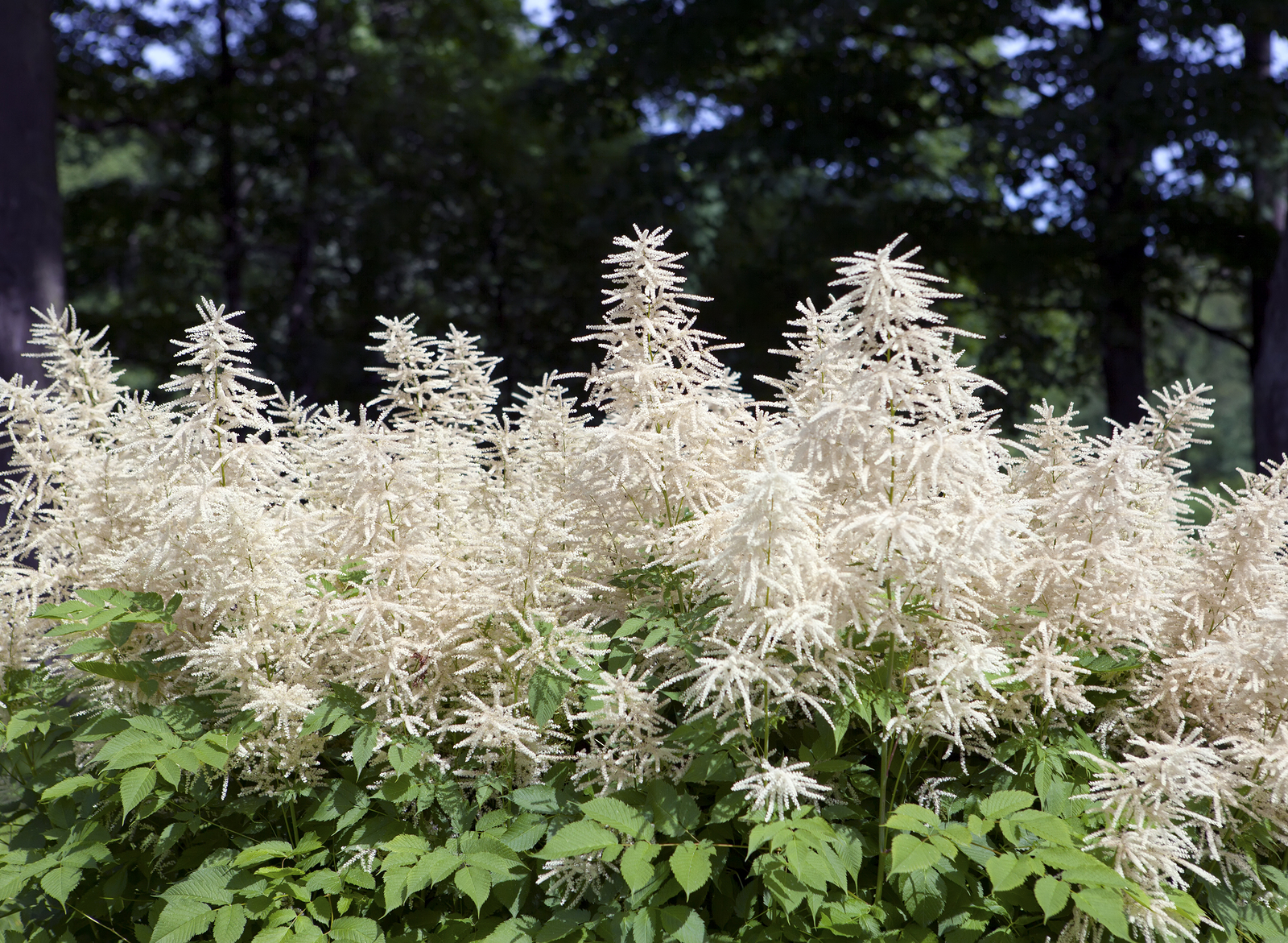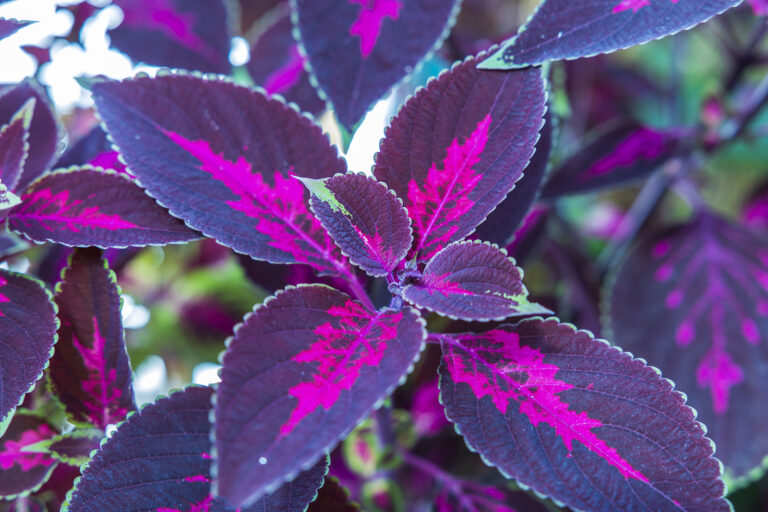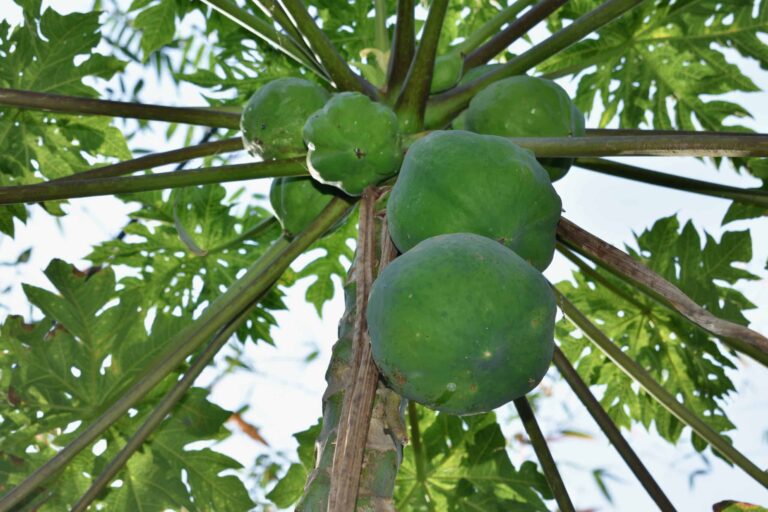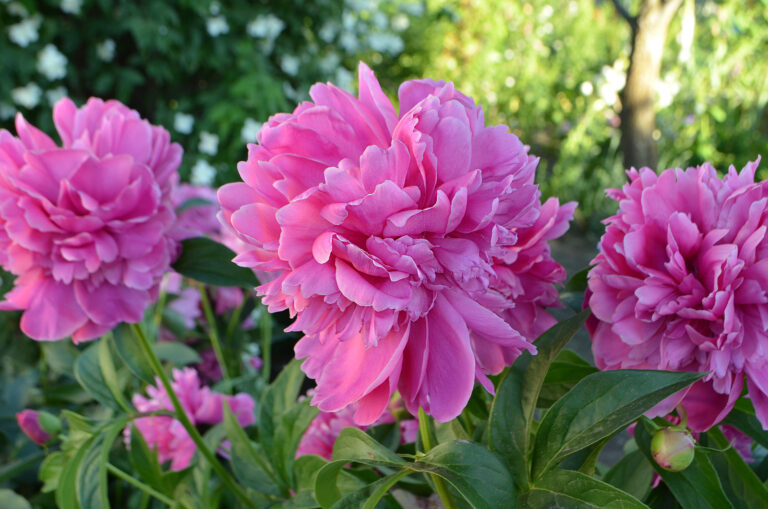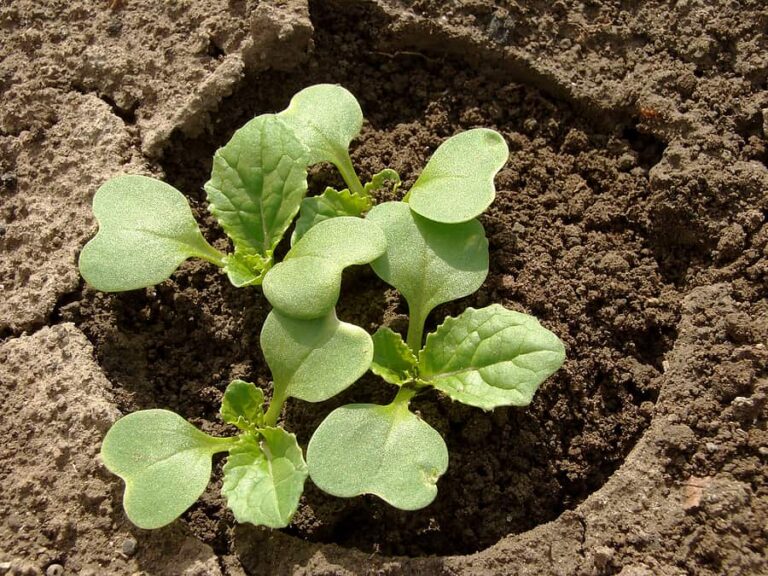How to Grow Goat’s Beard — Aruncus
Aruncus–commonly called goat’s beard–is a shrub-like woodland plant with showy, plume-like spikes of tiny, cream-colored foliage. It looks very much like astilbe. Aruncus is easy to grow and makes a good background plant in beds and borders. A single plant may be used as an accent.
Grow Goat’s Beard in part to full shade in humus-rich soil. Goat’s beard does not grow well in hot, humid regions. Aruncus thrive in moist soil and is a good plant to grow near ponds.
Aruncus is a genus member of the Rose family.
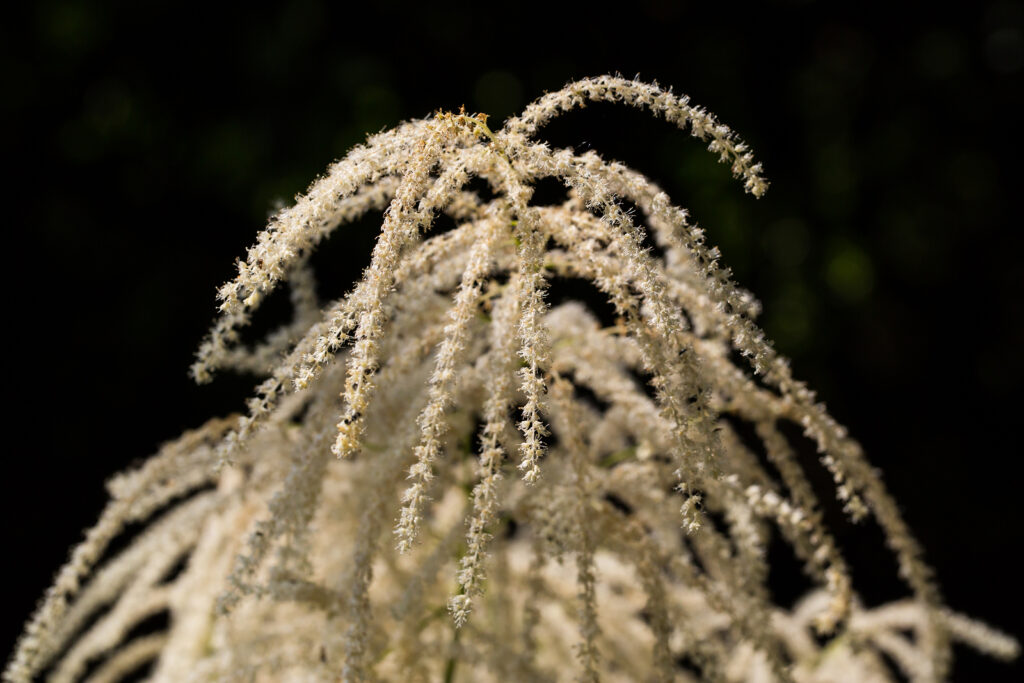
Get to know Aruncus
- Plant type: Perennial
- Growing Zones and range: Zones 4 to 9
- Hardiness: Hardy to -35°F (-37°C); plants will struggle in hot and humid regions; plant tolerate cold.
- Height and width: 3 to 6 feet (90-180cm) tall; 3 to 5 feet wide
- Foliage: Shrub-like plant with large three-lobed leaves and airy plumes of flowers.
- Flowers: Huge white feathery panicles of flowers with small petals; flowers are followed by blackberries. Male and female flowers are borne on separate plants.
- Flower color: Creamy white
- Bloom time: Early summer
- Uses: Good choice for woodland gardens; berries provide winter interest in the garden. Attracts birds, butterflies, and other pollinators.
- Garden companions: Plant with ferns, wildflowers, hostas in lightly shaded woodland garden; combine with other perennials in beds and borders.
- Common name: Goatsbeard
- Botanical name: Aruncus
- Family: Rosaceae
- Origin: Mountainous areas in the Northern Hemisphere
Where to plant Aruncus
- Plant Aruncus in full sun in Zones 3-4; needs shade in Zones 5-7.
- Grow Aruncus in humus-rich, moist, deep soil.
- Soil pH: Neutral to slightly acid soil–6.5.
Aruncus uses and companions
- Grow Arunucs in a perennial border, rock garden, or woodland garden.
- Plant Aruncus in clusters along a wood edge, along streams, and in other natural settings.
- Good companions for Aruncus are Bergenia, Hosta, Siberian Iris, Ligularia.
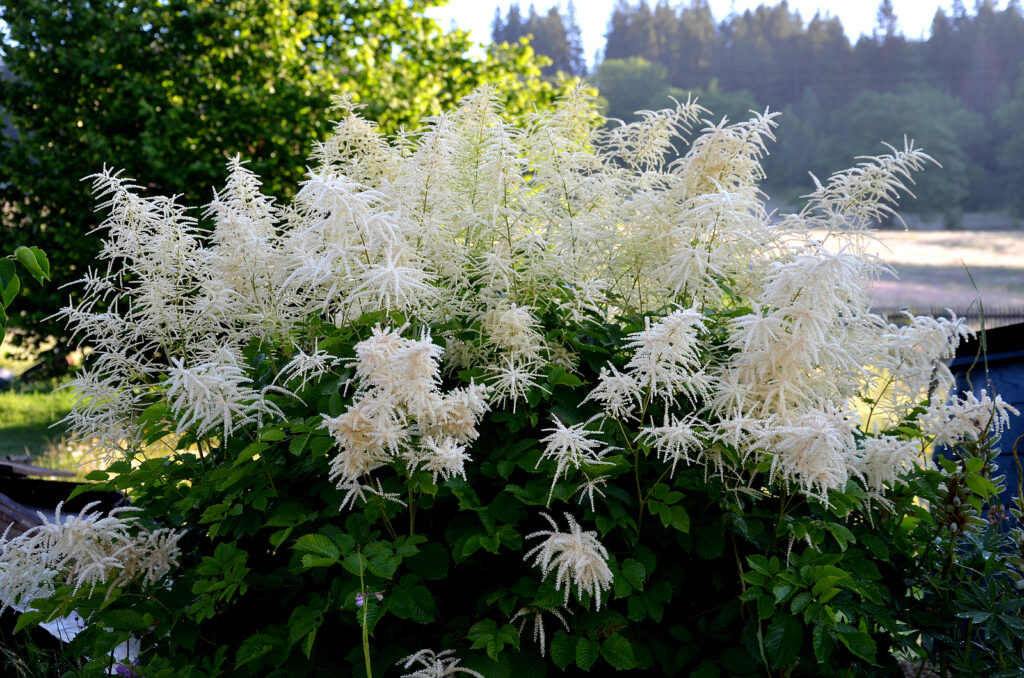
When to plant Aruncus
- Set young plants in the garden in spring. Established plants have extensive roots and can be difficult to transplant.
- Start seeds indoors in spring in flats or six-packs; cover seeds with 1/8 inch of soil or finely milled vermiculite. Keep seeds at 40° to 60°F (4.4°-15.6°C) until they germinate.
- Germination takes 30 to 60 days. Transplant seedlings to the garden when they are 3 or more inches tall.
- Sow seeds outdoors after the danger of frost has passed in spring. Also, sow seeds in summer or fall. Sow seeds in evenly prepared soil.
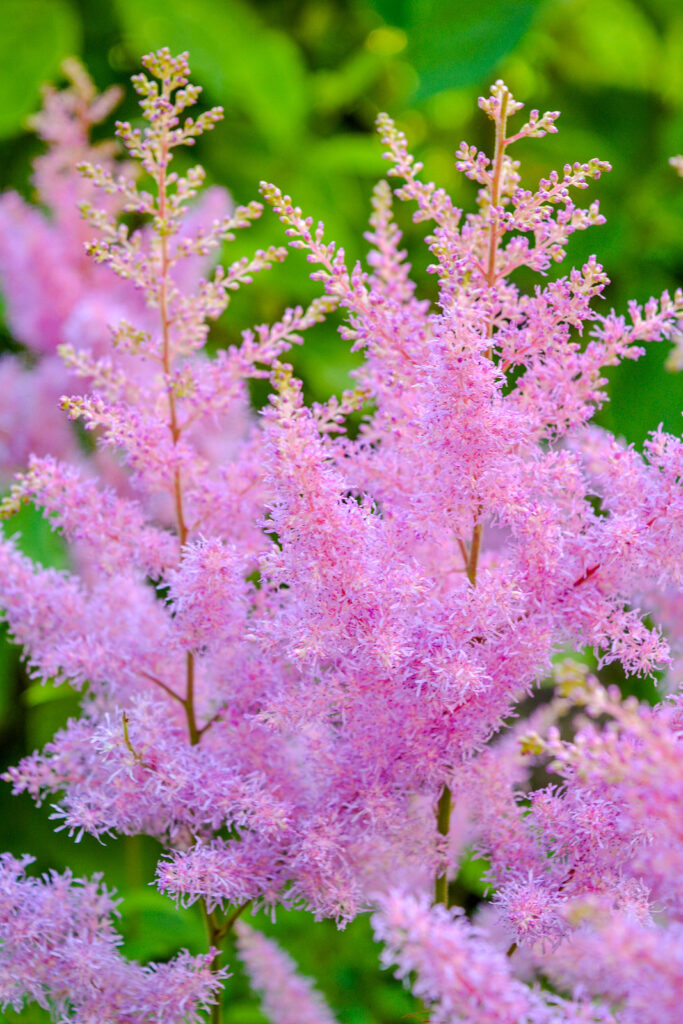
Planting and spacing Aruncus
- Space Aruncus plants 4 to 6 feet (1.2-1.8m) apart.
- Sow seed 1/8 inch deep in evenly prepared soil.
How to water and feed Aruncus
- Keep the soil evenly moist; if the soil dries, the plant will decline.
- Fertilize Aruncus with a side dressing of all-purpose fertilizer every three weeks or add a slow-release fertilizer to the soil in spring.
Aruncus care
- Work aged compost into the soil ahead of planting goat’s beard. Side dress established plants with aged compost or organic planting mix.
- Mulch around plants to conserve soil moisture.
- Protect plants in winter by mulching with 2 inches of chopped leaves; remove mulch in spring when new growth begins.
- Aruncus is rabbit and deer-resistant.
- Aruncus has no serious pests or diseases.
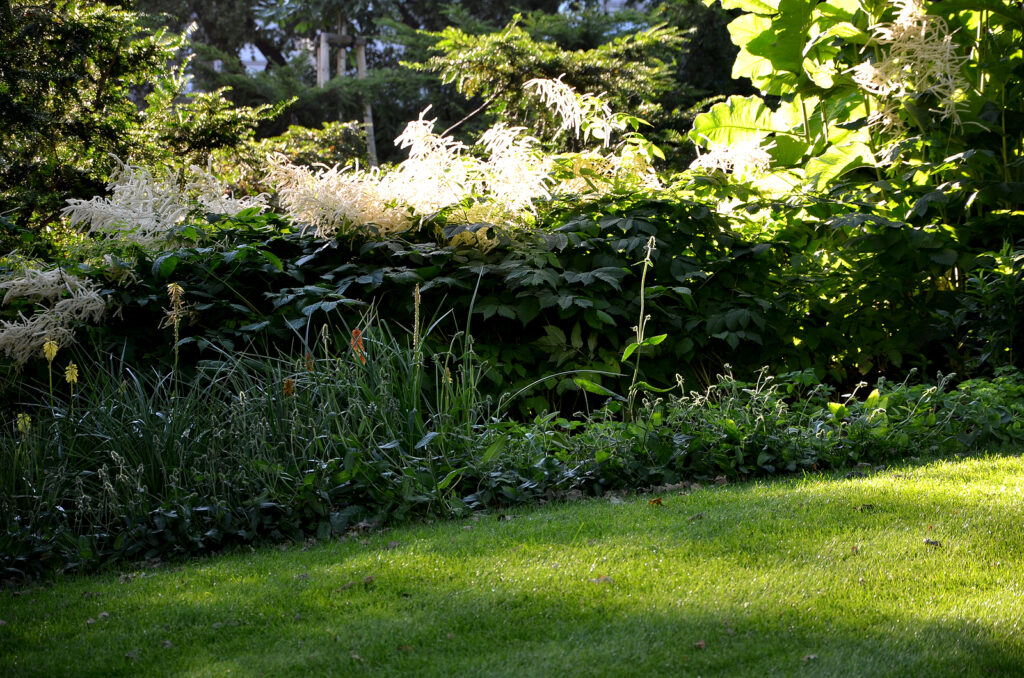
Aruncus propagation
- Divide Aruncus in spring or autumn every 2 or 3 years. However, the roots are large and may be difficult to cut. Best to divide Aruncus only to revitalize the clump.
- Sow seed in summer outdoors.
- Arunucs seed will germinate in 28 to 35 days at 55° to 65°F (13°-18°C).
Aruncus varieties to grow
- Aruncus aethusifolius: Perennials make foot tall mounds with white flower plumes to 16 inches (40cm) long; use in rock gardens and as edging.
- A. dioicus (A. sylvester): Perennial grows to 6 feet (1.8m) tall with foam white flowers in much-branched clusters; this is the main garden type; cultivars include ‘Child of Two Worlds’ is compact to 4 feet (1.2m), ‘Kneiffii’ grows to 3 feet (.9m) and has deeply cut ruffled leaves.

